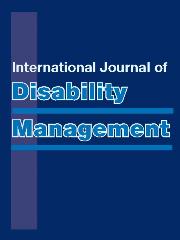Article contents
Scoping Review of Work Disability Policies and Programs
Published online by Cambridge University Press: 20 June 2017
Abstract
Purpose: This scoping review identifies the foci of research articles that address government laws, policies and programs designed to foster labour market integration of people who, due to illness or disability, face challenges entering or staying in the workforce. Method: A systematic search of English-language peer-reviewed articles published between 2000 and 2014 yielded 14,474 articles. Title and abstract review identified 723 included articles that addressed government-led programs, policy or legislation on work integration and/or income support after injury, illness or impairment. These were sorted by theme, work disability program or policy, disability type, jurisdiction and year published. Results: The number of articles published that address work disability laws, policies and programs increased steadily. Most articles addressed disability in general. Among articles with a specific health focus, mental health was the most common. Research gaps are identified for mixed method study designs, chronic and episodic conditions, illness and cancer, and for work disability policy studies outside of North America, Northern Europe and Australia. Conclusions: We find a growing number of published articles about work disability and policy and identify specific areas where is a need for further research.
- Type
- Review Article
- Information
- Copyright
- Copyright © The Author(s) 2017
References
- 7
- Cited by


